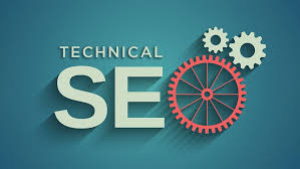Introduction: Why Design Matters for Every Small Business When you run a small business, every detail counts. That includes your business card, your Instagram posts, your product packaging—and especially your logo.
These visual elements create your customer’s first impression of your brand. That’s why graphic design is not a luxury—it’s a necessity. Great design tells people who you are, what you do, and why they should trust you—often without saying a word. Whether you're selling handmade jewelry, running a local bakery, or launching a tech startup, your brand needs visual communication to survive and thrive.
What Is Graphic Design in a Business Context?
Graphicdesign for business is all about communication through visuals. It’s using logos, images, typography, colors, and layout to: Attract attention Convey your message Build recognition Drive action It’s not just about making things look pretty—it’s about making them work. Graphic design can increase your sales, grow your brand loyalty, and set you apart from competitors. The Key Benefits of Good Design for Small Businesses Professionalism – A well-designed logo or flyer shows customers you mean business. Credibility – People are more likely to trust and buy from a brand that looks polished and legitimate. Recognition – Consistent visuals make your brand memorable.
Conversions – Good design guides users to take action—whether it’s making a purchase or signing up for your newsletter. Competitive Edge – In crowded markets, design helps you stand out. Core Elements of Graphic Design Every Business Should Master Logo and Brand Identity Your logo is the visual handshake of your business. It should be: Simple Memorable Versatile Beyond the logo, your brand identity includes colors, fonts, imagery, and layout style. Together, these form your brand style guide. Color Palette and Typography Colors evoke emotions. Fonts communicate personality. For example: Blue = trust Red = urgency Green = natural Choose 1–2 fonts and 2–3 core colors, and use them consistently across all platforms.
Marketing Materials (Flyers, Brochures, Ads) Even in the digital age, print materials are powerful. Make sure your flyers and business cards are clean, clear, and aligned with your brand. Digital Graphics (Social Media, Email, Website)
Your online presence is your digital storefront. Ensure your Instagram feed, email headers, and website visuals all follow your brand’s visual identity. How to Build a Strong Brand Through Design Consistency Across Platforms Whether someone visits your Facebook page, sees your flyer at a local shop, or lands on your website, everything should feel connected.
Use the same: Logo Fonts Colors Imagery style Consistency = professionalism + trust. Emotional Impact of Visuals Design speaks to the heart before the head.
Use imagery and layout that align with the feeling you want your audience to have—joy, trust, excitement, comfort. Affordable Design Tools and Platforms for Small Businesses You don’t need a massive budget to design like a pro. Try these tools: Canva: User-friendly templates for everything from logos to Instagram posts. VistaCreate: Great for animated content.
Looka: AI logo maker with brand kits. Figma: Ideal for collaborative and web-based design. Adobe Express: Lightweight, mobile-friendly design platform. These tools are intuitive, affordable, and often come with free versions for basic needs.
Hiring vs. DIY: Which Is Right for You? DIY works if: You’re just starting out You need quick turnaround You’re working with a tight budget Hire a designer if: You need custom branding or packaging You’re launching a high-ticket product You want to scale and go premium Tip
: If hiring a designer, ask for a brand style guide as part of the deliverables. Design Mistakes That Small Businesses Should Avoid Too many fonts and colors = visual chaos Low-quality images = cheap look Inconsistent branding = confusion Copying competitors = no identity Ignoring mobile = poor user experience Stick to a clear, minimal, and consistent aesthetic. Simple often wins. Tips for Creating High-Impact Visual Content on a Budget Use free stock photo sites like Pexels or Unsplash Create templates for social media using Canva Reuse design elements to save time Keep it clean and readable—avoid overcrowding Schedule your posts using branded visuals ahead of time Great design doesn’t have to be expensive—it just needs to be intentional. Real-World Examples of Small Business Design Success The Sill (plant delivery):
Clean typography, soothing greens, and minimalist layouts reflect wellness and modern living. Brooklyn Roasting Company: Bold packaging design and consistent color schemes helped them scale beyond their local cafe roots. Glossier: Started as a blog, but thanks to soft pinks, clean fonts, and user-centric visuals, it became a billion-dollar brand.
These businesses prove that design drives perception—and growth. How to Maintain and Update Your Visual Identity As your business grows, your design may need to evolve. Review your visuals every 6–12 months to ensure: They still align with your audience Your branding feels current Your visuals look consistent across platforms Use your brand style guide as a compass to stay aligned during updates or redesigns. Conclusion
: Make Design Your Secret Business Weapon Graphic design isn’t just decoration—it’s a business strategy. When your brand looks good, it performs better. Whether you’re creating your first logo or revamping your Instagram grid, every pixel is a chance to make an impact. As a small business, design is one of the few tools that can instantly level the playing field between you and bigger brands.
So invest time, creativity, and care into your visuals—and watch how your brand grows from it.







